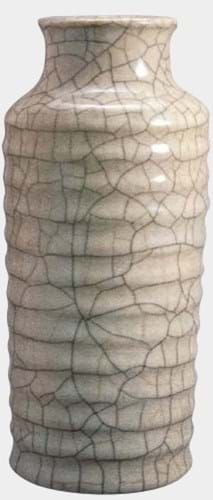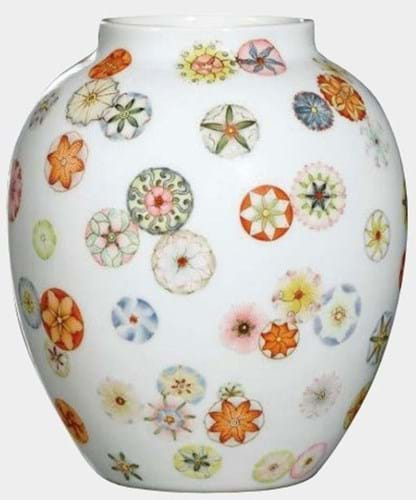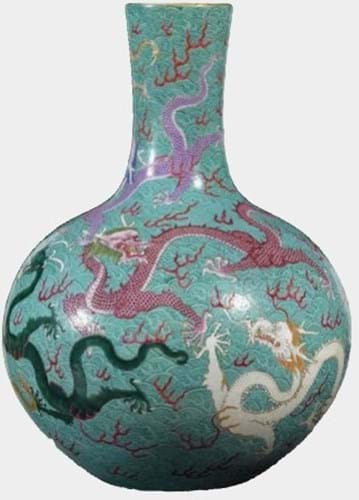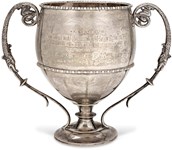
Four of his siblings had joined the family business and one of his older brothers, Paul, had his own antiques shop in Harrogate.
When Richard left school he went to work for Paul. The shop was always well stocked with Chinese and Japanese ceramics and works of art as well as European ceramics and it was an apprenticeship that Richard really enjoyed.
He was fascinated with the Sotheby’s and Christie’s catalogues that Paul subscribed to and were in the office above the shop.
Richard would spend every lunch hour going through these catalogues. Of particular interest were the Sotheby’s Hong Kong catalogues and it caught his eye that small pieces of Chinese imperial porcelain could fetch very high prices. It was this fascination that would last his entire life.
Vibrant Brighton scene
In 1983 he moved to Brighton, a town and locality full of antiques shops. Richard started to buy things along the south coast from dealers and local auctions and then take them to Portobello Road for the Saturday market, where trade was vibrant, and he soon became well known to both the London and international trade.
His first stroke of good fortune occurred during his year in Brighton, which he said changed his life. In a small antique furniture shop on a sideboard he spotted a Chinese porcelain, 20cm tall cylindrical ribbed monochrome vase.

Richard Peters bought this ribbed monochrome vase in a small antique furniture shop for £20. He sold it for £5800 at Sotheby's.
He was not sure if it was genuine or not as it bore the six-character sealmark of the Qing dynasty Emperor Yongzheng, who reigned 1736-95. It was ticketed £25 and Richard offered £20 which was accepted.
He took it to Sotheby’s London to find out their opinion and was thrilled to be told that it was definitely ‘mark and of the period’ and they would happily include it in their next auction with an estimate of £4000-6000. It fetched £5800, which was a year’s expenses at the time.
This confirmed his realisation that these types of imperial porcelains from China could literally be found anywhere.
His passion for this field developed further and he studied the market with avid interest. He travelled to Hong Kong and New York to view the auctions to handle many imperial wares.
This was necessary to really get the feel of the objects, how they were made, how they actually felt in your hands, how the foot rim was finished etc.
Richard made copious notes in his catalogues about the pieces. He even coined his own phrase and would tell me whether a piece had a “luminosity”.
His passion, great personality and the fact that he was wonderful company went down very well with the Sotheby’s management and the Hong Kong trade where he started to rub shoulders with the biggest dealers in the world and important collectors of Chinese art.
Another of his great finds was discovered at a small auction in the suburbs of Washington, DC, in 1999.
This time he knew immediately that this imperial famille rose enamelled ‘ball flower’ vase bearing the sealmark of the Emperor Qianlong was the real thing.

An imperial famille rose enamelled ‘ball flower’ vase bearing the sealmark of the Emperor Qianlong, bought by Richard Peters for $50,000 and later sold for HK$3.2m.
It was flawless and only estimated at $4000-6000. He made up his mind that he would spend almost everything he had to buy this “treasure”.
In fact he set his absolute limit at $190,000. It was eventually knocked down to him for $50,000 as there was obviously other serious competition. He took it home to London to show to Julian Thompson, the chairman of Sotheby’s and head of Asian Art, now a friend of Richard’s.
Julian took his time examining the vase and eventually said it was wonderful and he would be delighted to include it in the next Hong Kong auction at HK$1m-1.5m (approximately £100,000-150,000 at the time).
Richard went to the auction where Sotheby’s treated him like royalty. The vase sold for HK$3.2m and this made it his best year to date.
One of the rarest pieces that Richard ever sold at an auction was one he found in a barn in Norfolk. It was a large bottle vase, one of the five great shapes of Chinese porcelain known as Tianqiuping and was painted with nine multicoloured dragons on a turquoise wave ground. It had been broken at the neck, badly repaired and drilled with a small hole through the Qianlong mark and mounted as a lamp.

A large Tianqiuping bottle vase that Richard Peters found in a barn in Norfolk and bought for £1250. He sold at Sotheby’s Hong Kong in 2010 for £420,000.
Fortunately, Richard paid only £1250 for it and it sold in Sotheby’s Hong Kong on October 8, 2010, for £420,000 – probably only 10% of its value had it been perfect.
Leeds to Israel
In 2003 Richard married his wife Michal and he moved from London to Israel, but moved back to the UK in 2008 as he wanted his young children to start their education in England.
They bought a stunning double-fronted house in Alwoodley, Leeds, and remained there for 10 years before finally emigrating to Israel so that Michal could be nearer to her elderly parents. Richard was a keen follower of Leeds United FC, but his main hobby was playing golf and he won the gold medal in the open at the Maccabiah Games a few years ago.
Sadly Richard passed away on Saturday, March 13, from pancreatic cancer. He is survived by Michal and three teenage children, Zohar, Yuval and Ori.
He will be terribly missed and fondly remembered for his kindness and generosity to all his family and friends and for his great knowledge and enthusiasm in the Chinese art business.
By Stuart Marchant













